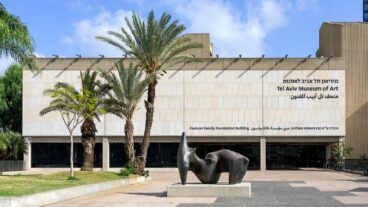Too full: Delays at peak times are causing loss of revenues and increased inconvenience to passengers at many of the world’s busiest airports.It may not be popular in London, but it does seem to work. Just as motorists in Britain’s capital city must pay a fee to drive into the city-center during peak hours, Israeli economist Dr. Itai Ater of Tel Aviv University’s Faculty of Management is suggesting that airlines should also pay for peak landing and take-off times at airports.
“What I propose is a policy to reduce the amount of delays in the airline industry,” says Ater. Airlines that want to use an airport’s runways during the busiest times of the day, he asserts, should pay an additional fee.
This price for premium access to the runway could reduce airport congestion — and the inevitable delays, as well as the risks, associated with crowded skies.
Traffic congestion at the world’s airports is a growing problem, particularly at busy airports in the US, and Europe. The estimated annual costs of delays are $10 billion.
“When there are delays on take off or landing, a cascading effect is created, with lots of associated problems, risks and financial costs,” says Ater, who evaluated flight records from America’s busiest airports for his doctoral thesis at Stanford University.
More spent on fuel, employment and flight times
Airlines, for instance, spend more money on fuel, and there are other indirect costs as well – to both the airlines and the passengers.
To counter delays, many airlines “pad” their schedules, adding a considerable amount of time onto the flight plan, explains Ater. This padding increases the costs of staff and the busy business flyer time, something often more valuable than money.
In May, Ater will present his advice at the National Bureau of Economic Research conference in Boston. His aim is to spare airlines from future catastrophes as airports — and skies — get busier.
He believes that if congestion pricing is introduced, some airlines will prefer not to pay the charge and operate during non-congested periods. Consequently, overall congestion would drop.
Currently, airlines at most airports pay for runway use depending on the weight of the aircraft, except for a few such as Chicago O’Hare, where airports use pre-determined slots to determine charges and time of operation.
Right approach for Boston and LAX, but not Atlanta
Ater believes that congestion pricing is the right approach for airports such as Boston and LAX, but warns that not all airports can benefit from this plan.
“At airports where there is a monopoly or almost a monopoly by a single airline, charging a tariff during peak hours has less meaning,” he says.
“In these airports, like those in Atlanta, Charlotte, or Detroit, we already find fewer delays. So why intervene? Individual airlines that dominate an airport do a better job of organizing flights more intelligently and efficiently to reduce the level of delays,” he adds. Atlanta is the hub for Delta Airlines, Charlotte for USAir and Detroit for Northwest Airlines.
Previous research on the subject found it hard to provide consistent empirical evidence for congestion pricing. By splitting airport “types” into two categories — those with a monopoly and those that host multiple airlines – Ater began to see clear patterns emerge.
No system is perfect, however. And it’s clear that while congestion pricing may reduce delays, it will also make airplane flights a little more difficult for passengers flying on the cheap, who’ll have to travel outside of peak hours.












